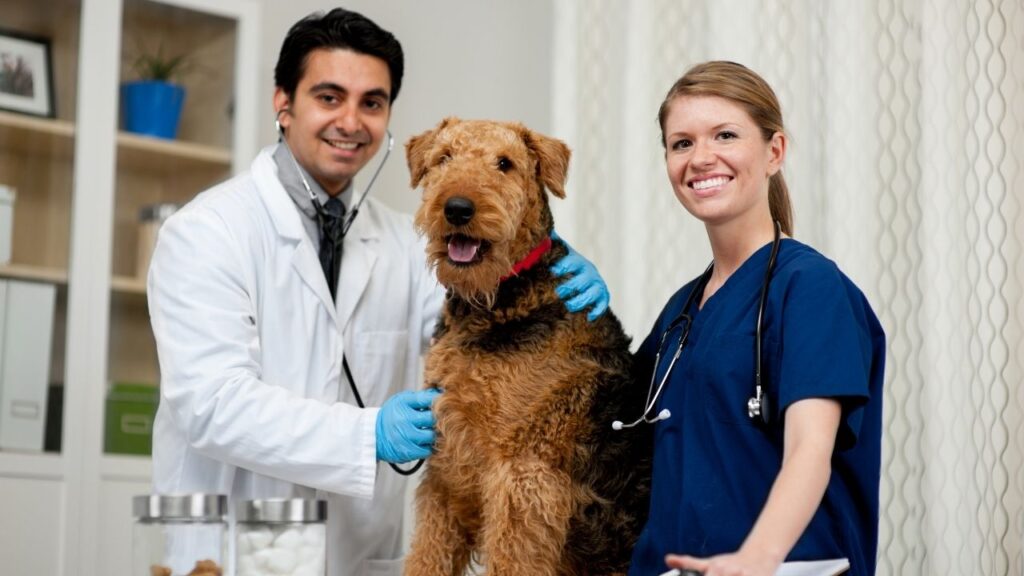As any family member’s medical condition becomes more complex it is important to keep records at home. A journal can be a helpful reference for both you and your dog's veterinarian. Tracking bathroom habits, drugs given, appetite, and other observations throughout the day can be vital in aiding your dog’s care.
Key Takeaways
- You should tell your veterinarian about any change in your dog’s health, including appetite, drinking, weight loss or gain, bathroom habits, lameness or other discomfort, lumps and bumps, breathing, and activity level.
- Keeping a journal will allow you to give precise details about changes you have noticed in your dog.
- The best way to share health notes is with an organized note or email. Having everything written down ahead of your appointment will ensure that you don’t forget everything and that your vet has all of the information about your dog they might need.
Why Keep a Journal?
When we see our dog every day, it is sometimes very difficult to see changes in their condition.
A good example is weight loss or weight gain. Dramatic changes certainly can be noticed easily, but gradual or subtle changes may not be noticed from week to week.
Keeping a journal will keep you in observation mode, help you track changes, and give your veterinarian accurate data.
Your Observations Are Important
When your dog is ill, your observations are critical to help your veterinarian keep them healthy. You know your dog better than anyone else, and your veterinarian will rely upon your observations to understand how your dog is doing.
Accuracy
Keeping a written record allows you to be very accurate regarding the day, time, and nature of anything unusual that you observe. Keeping a record will also help you pick up on subtle changes before they become something more serious.
What Kind of Journal Is Best?
Pre-made journals can be purchased and used to record your pet’s progress. However, it is probably best to create your own journal based on your dog’s specific health issues and which specific things you and your veterinarian feel are important.
It is much more important that you use a journal than what form it takes. Some people do best by making notes in their digital calendars. Others like to buy a small notebook and make entries every day. Others might make notes on Post-it notes and keep them all in the same place.
Whatever form your journal takes, you are on the right track as long as you use it.
What to Track When In a Journal
Your journal should be chronological and dated. Set it up so you can note the date and time each observation occurs. This will help you observe important changes from day to day.
Your veterinarian may provide some guidance about what information they find helpful, but here are some basic facts to record when you are keeping a journal:
- Medications:
- name
- concentration (for example, a 50 mg tablet)
- the amount given (ex: 1/2 a tablet)
- how the medication is given
- the times they are administered throughout the day
- Appetite and water consumption: Be sure to note what and how much your dog eats and drinks.
- Body weight:
- A change of a few ounces can be significant, particularly with smaller dogs.
- Use a baby scale for animals under 15 lbs. for the best accuracy.
- For bigger dogs the easiest option is dropping in to the vet hospital to use their scale (most hospitals do not require an appointment for weight checks).
- Another option is to pick up your dog, weigh you both, and then (here’s the part I try to avoid) weigh yourself and subtract your weight from the combined weight of you and your dog. This will give you the weight of your dog.
- However you choose to weigh them, do it the same way each time so you are making the most accurate comparisons.
- Defecation and urination:
- How often?
- How much?
- Any changes in appearance should be noted.
- Coughing, sneezing, vomiting or diarrhea:
- frequency (how often it happens)
- the volume or amount
- describe what is produced (i.e., what does the vomit look like, is the nasal discharge clear or opaque)
- Seizures:
- when (time and day)
- how long it lasted
- what it looked like while your dog seized
- Activity level:
- Is your dog sleeping more?
- Do they still go for the same length of walks?
- Do they seem lethargic?
- Behavior:
- Does your dog act the same?
- Do they become confused?
- Do they interact with you normally?
- Pain and lameness:
- What do you see or hear or feel that indicates pain?
- What seemed to trigger the problem?
- Describe the lameness or where you think your dog is painful.
- How long did it last, and when did you first notice the problem?
- Any new swellings, bruises, or changes in gum color, skin color, or hair coat.
- Sometimes temperature, respiratory (breathing) rate at rest, and heart rate may be important to monitor. If this is the case, your veterinarian will provide you with the range that they consider normal and when to contact them if the values are abnormal.
When to Call Your Veterinarian
Some of your observations may warrant contacting your veterinarian immediately. It is always better to check in with any concerning observation, particularly if your dog doesn’t seem “normal.” Veterinarians know that owners often know something is wrong with a dog before tests show what’s going on. Some call it ADR, which stands for “ain’t doing right.”
In short, never hesitate to share concerns regarding your dog. After all, you are their best advocate and integral in their care.
Always Bring Your Journal
Veterinarians rely on owner information to help animals, because animals cannot tell us what is going on for them. Be sure to bring your journal to each visit with your veterinarian and any other referral or emergency visits.
It is also helpful to bring all of your dog’s medications with you, or a concise list of current medications, or even all of your medical files.
Topics
Did You Find This Helpful? Share It with Your Pack!
Use the buttons to share what you learned on social media, download a PDF, print this out, or email it to your veterinarian.







